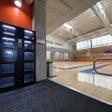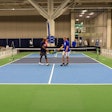Source: American College of Sports MedicineWilliam W. Dexter, MD & Michael F. Bergeron, PhD
Athletics are as much a part of American high school culture as prom night and geometry. Yet, sports programs gone amok can sometimes lead to misplaced priorities and unbalanced budgets, as thoughtful journalist and author Amanda Ripley noted recently in The Atlantic. We agree with some of her concerns; however, evidence-based research shows a more well-rounded perspective of this sometimes heated issue.
Pointing out the egregious examples of problems in high school sports, without addressing the more prevalent benefits and successes, lacks helpful insights and neglects practical solutions to effectively increase constructive outcomes, or even achieve accurate assessment of benefit vs. cost. Are there instances of overspending on school sports or even cases where academics are languishing during football season? Of course. But that does not describe the vast majority of situations, nor does it advance the important discussion of how best to develop and educate youth. Beyond sportsmanship, character-building and teamwork, appropriate high school sports participation fosters physical activity that has been shown to improve cognition, student achievement and interpersonal cooperation and reduce absenteeism and discipline problems - not to mention providing myriad fitness and health benefits during high school and later on in life.
Long before science documented the relationship between lifelong physical activity, health and quality of life, the ancient Romans got it right with "Mens sana in corpore sano" (a healthy mind in a healthy body). With all the pressures facing our youth to succeed academically amid global competition and find a place in a challenged economy, shouldn't we help them establish lifelong healthy habits including regular physical activity? Rather than eliminating athletics, we should re-think school sports programs to enable more and sustained student participation. Where only the elite compete, let's offer intramural programs that attract kids with varying levels of skill and experience. Foster opportunities for those who use wheelchairs or prostheses (being the team manager or timer doesn't replace a legitimate chance to train and compete.)
Title IX launched a cascade of progress for girls and women, with benefits that have blossomed since 1972. Youngsters of either sex play team sports in droves during early grades. But too many youth - particularly girls - drop out of athletics during their teen years. Check the numbers participating in sports in college and beyond; the pyramid points to only a small group of highly talented, strongly motivated individuals persisting at these levels. Too many former athletes become sedentary adults, burdened by chronic diseases that a healthy lifestyle could prevent.
We appreciate Amanda Ripley's engagement on and interest in this issue. We share with her and others who identify challenges and opportunities with high school sports. Every day, the American College of Sports Medicine and the National Youth Sports Health & Safety Institute are working to make progress on some of these same concerns, so the sports experience is positive, balanced, and rewarding in so many aspects of a young person's life, now, and as they mature as adults. Sports and other physical activity can be beneficial for academic achievement, health, productivity, and many other gains. In fact, many countries around the world use sports as a major strategy for national progress.
So, we agree there are opportunities for progress in high school sports; but the answer is not to throw, as the saying goes, the baby out with the bathwater. Instead, we should endeavor to make measurable and important progress in youth sports toward agreed upon goals. Let's shift the norm from crowds watching a handful of gladiators to a culture in which physical activity - through sports, exercise or the activities of daily living - is a way of life at every age.
Michael Bergeron, Ph.D., Executive DirectorNational Youth Sports Health & Safety Institute
William Dexter, M.D., PresidentAmerican College of Sports MedicineMaine Medical Center
William Dexter, M.D., FACSM, is President of the American College of Sports Medicine (2013-2014). He directs the sports medicine fellowship and sports medicine clinical programs at Maine Medical Center, where he also serves as assistant program director for the family medicine residency program. Dr. Dexter is responsible for the orthopedic, sports medicine, occupational medicine and radiology curricula. He serves as a precept at the Family Medicine Center, where he maintains a practice in family and sports medicine.
Michael F. Bergeron, Ph.D., FACSM is the executive director of the National Youth Sports Health & Safety Institute and professor of pediatrics at Sanford School of Medicine of the University of South Dakota. Internationally recognized for his research and leadership in exercise-heat stress and youth athletic health, Dr. Bergeron is a Fellow and past trustee of the American College of Sports Medicine and is currently a member of the National Federation of State High School Associations Sports Medicine Advisory Committee. He is also a member of the Academic Advisory Board for the International Olympic Committee postgraduate Diploma Program in Sports Medicine.
































